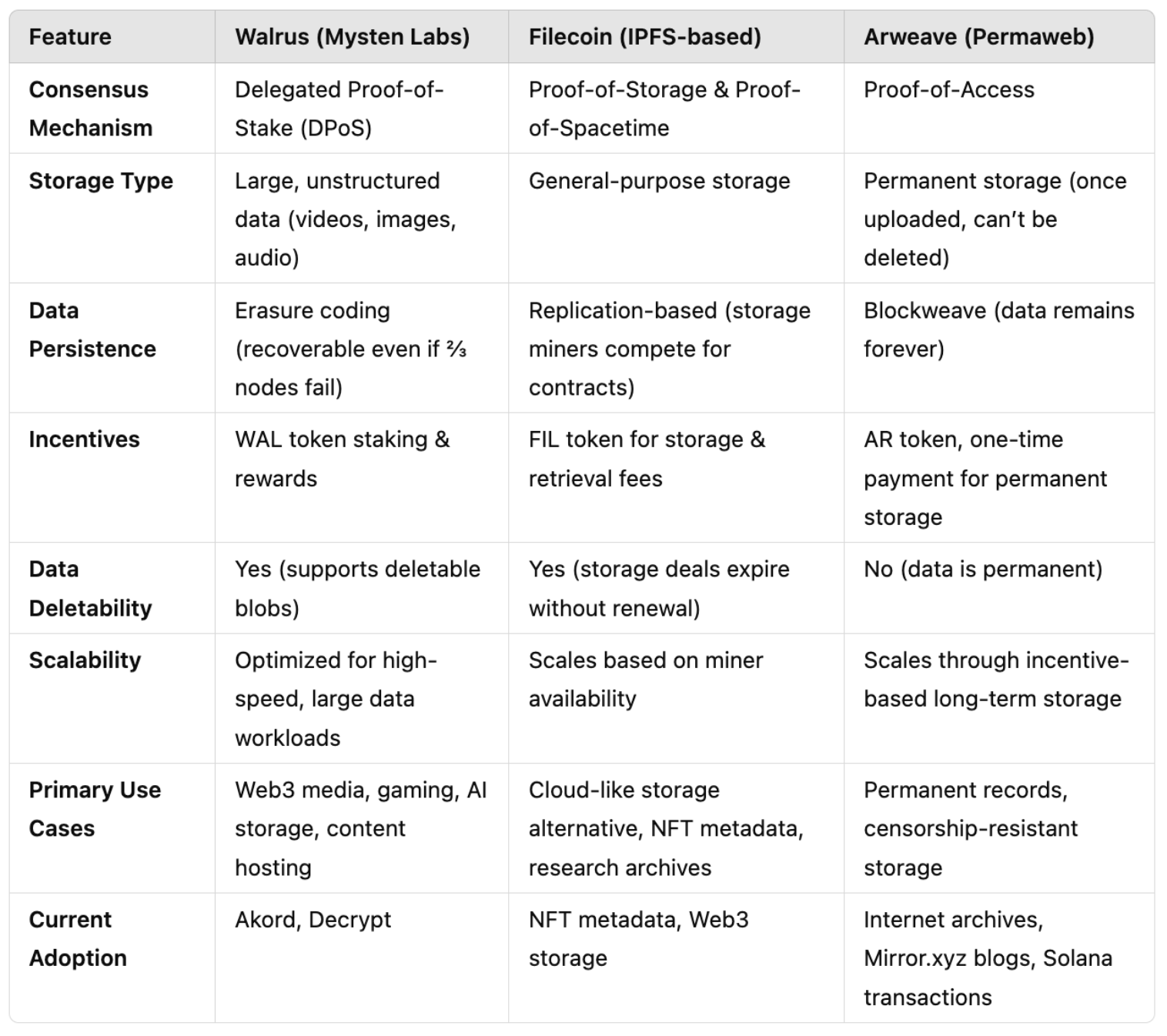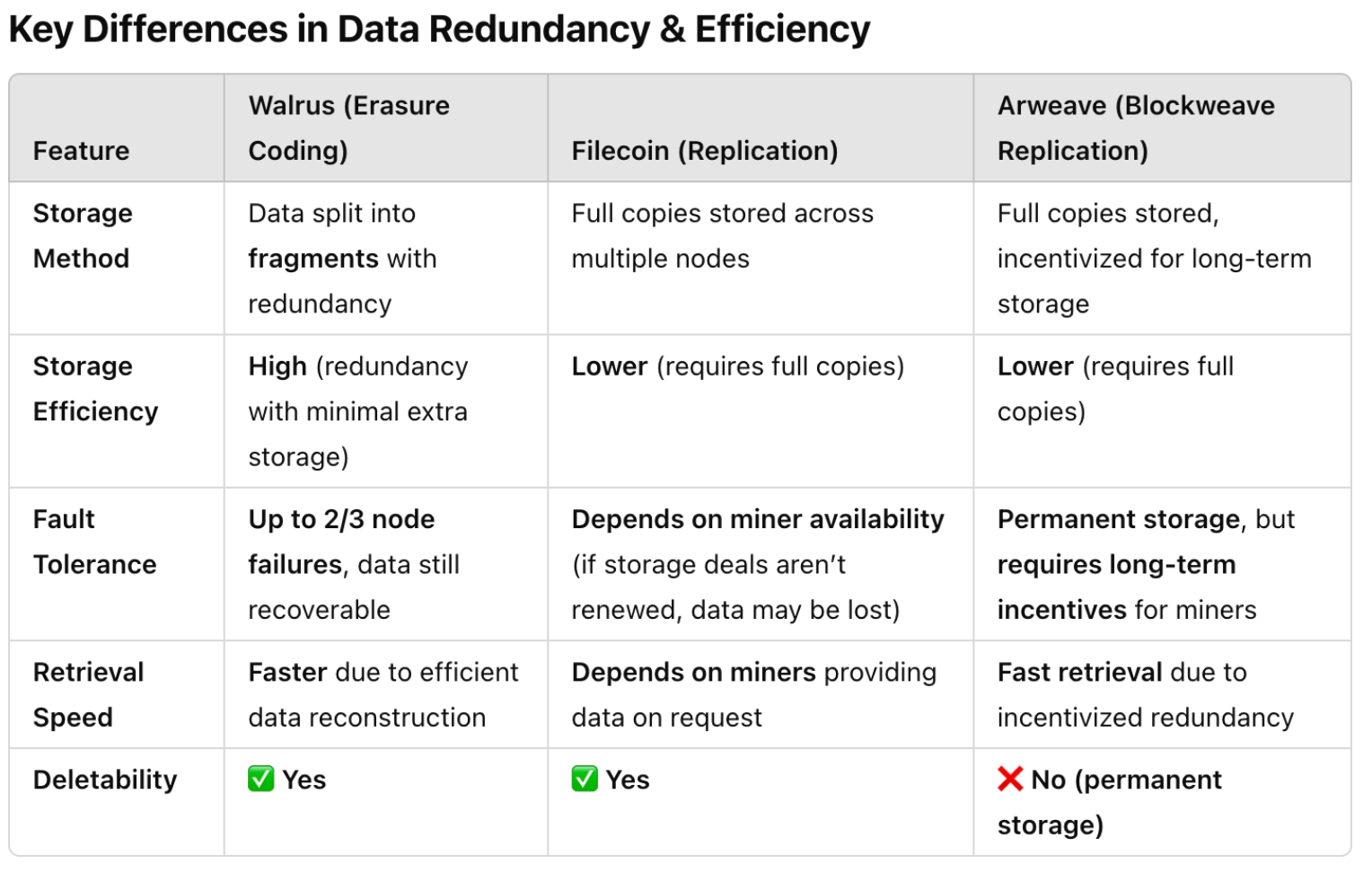Walrus Protocol Explained: The New Contender in Decentralized Storage
In decentralized storage, new contenders are emerging to challenge the dominance of established players like Filecoin and Arweave. One of the latest innovations in this space is Walrus Protocol, a next-generation storage and data availability solution developed by Mysten Labs. But how does it compare to existing solutions? Is it truly a game-changer, or just another blockchain project looking for traction? In this article, we’ll break down what Walrus Protocol is, how it works, and how it stacks up against Filecoin and Arweave. If you’re looking for the best way to store data on-chain, keep reading—this battle for decentralized storage domination is just getting started.
What is Walrus Protocol
Walrus is a decentralised storage and data availability protocol designed for large binary files, known as "blobs." This just really means any files a users already uploads to the likes of Dropbox etc.
It provides a robust and cost-effective solution for storing unstructured content across decentralised storage nodes, ensuring high availability and reliability even in the presence of Byzantine faults. Walrus leverages advanced erasure coding to maintain storage costs at approximately five times the size of the stored blobs, making it significantly more cost-effective than traditional full-replication methods.
The protocol integrates with the Sui blockchain for coordination, attesting availability, and handling payments. Storage space and blobs are represented as resources on Sui, allowing smart contracts to manage their availability and lifecycle. Walrus operates through a delegated proof-of-stake mechanism using its native token, $WAL, which is crucial for network operation and governance.
Let's take a closer look.
How does Walrus handle data recovery and availability?
It leverages advances erasure coding and a decentralised architecture:
- Erasure Coding: Data blobs are encoded into smaller slivers using erasure coding. This allows the original data to be reconstructed even if up to two-thirds of the slivers are missing. This ensures that data can be recovered even in the event of significant node failures.
- Decentralised Storage Nodes: The encoded slivers are distributed across a network of decentralised storage nodes. This distribution ensures that even if some nodes fail or become compromised, the data can still be recovered from the remaining nodes.
- Efficient Recovery Mechanism: In case of shard failures, a storage node attempting to recover slivers only needs to get data of the same magnitude as the missing data to reconstruct them. This efficient recovery mechanism ensures minimal data transfer and quick recovery.
- Byzantine Fault Tolerance: The system is designed to tolerate Byzantine faults, meaning it can handle nodes that are faulty or malicious. This fault tolerance ensures that data recovery is possible even under adversarial conditions.
Moreover, Walrus achieves a replication factor of 4x-5x, which is significantly lower than traditional blockchain systems that may require a replication factor of 100x or more. The replication factor refers to the minimal number of times data is duplicated across the network to ensure availability and robustness. The lower the number, the better.
Walrus vs. Filecoin vs. Arweave: Decentralized Storage Comparison
Walrus is best for high-performance storage with redundancy and data deletion support—ideal for Web3 applications needing scalable storage.


Why choose Walrus?
Walrus stands out as the most efficient, scalable, and flexible decentralized storage solution compared to Filecoin and Arweave. Here's why:
- Superior storage efficiency: Uses erasure coding, requiring far less redundant storage than Filecoin’s full replication, while still ensuring fault tolerance even if 2/3 of nodes fail.
- High-performance & scalability: Designed for large, unstructured data like videos, AI models, and gaming assets, making it ideal for modern Web3 applications.
- Fast & reliable retrieval: Data is fragmented and reconstructed efficiently, unlike Filecoin, which depends on miner availability, or Arweave, which prioritizes permanence over speed.
- Deletability & flexibility: Unlike Arweave (permanent-only storage), Walrus allows deletable blobs, making it practical for dynamic applications that need frequent updates.
- Stronger economic model: Delegated Proof-of-Stake (DPoS) ensures secure and fair participation, while WAL tokens incentivize efficient storage provisioning without excessive costs.
Chainflow is one of the early supporters of Walrus and in the active operator committee, and we’d love to have your support once mainnet launches by staking to us.
Have thoughts or feedback? Connect with us on Twitter/X!

